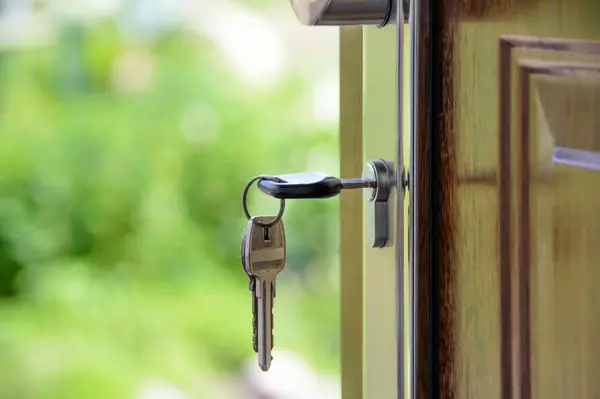Hidden Costs of Selling a Home (And How to Keep More Money in Your Pocket)
When most homeowners think about selling their house, they focus on the listing price, the potential profit, and where they’re moving next. But selling a home isn't as simple as hanging a “For Sale” sign in the yard and waiting for offers to roll in.
In reality, many sellers are surprised by the hidden costs that chip away at their bottom line—sometimes by thousands of dollars.
As a seasoned real estate professional, I want to help you walk into the selling process with eyes wide open. Understanding these hidden costs of selling a home can help you prepare financially, negotiate smarter, and ultimately keep more money in your pocket.
Let’s break it down.
1. Pre-Sale Repairs and Improvements
Before you even list your home, you'll likely need to invest in some level of repairs or upgrades to make your property market-ready.
Common pre-listing expenses:
-
Paint (interior/exterior touch-ups or full rooms)
-
Landscaping (curb appeal matters!)
-
Carpet or flooring replacement
-
Roof or HVAC inspections
-
Minor plumbing or electrical fixes
While you might not need to remodel your kitchen or replace all your windows, buyers expect homes to be clean, functional, and well-maintained. Skipping this step could cost you offers or force you into deeper negotiations later.
💡 Pro tip: Work with a Realtor who understands what improvements will provide the best return on investment in your local market. Not all updates are worth the money!
2. Home Staging and Professional Photography
Presentation is everything. Even in a seller’s market, staged homes tend to sell faster and for more money than those left as-is. This includes everything from decluttering to hiring a professional stager or renting furniture for vacant properties.
What sellers typically spend:
-
Staging consultation: $150–$500
-
Full-service staging: $1,000–$3,000+
-
Professional photography & videography: $150–$600
These costs can feel like a big upfront investment, but the ROI is often well worth it. According to the National Association of Realtors (NAR), 47% of buyers’ agents said staging affected most buyers’ view of the home.
3. Real Estate Agent Commission Fees
One of the biggest costs of selling your home is paying real estate commission—often 5–6% of the final sale price, split between the buyer’s and seller’s agents.
For example:
-
Sale price: $400,000
-
6% commission: $24,000
-
You pay: $24,000 (split 50/50 between agents)
💡 Keep in mind: Commission fees are negotiable. But remember, experienced agents bring marketing strategies, negotiation skills, pricing expertise, and access to a network of buyers that can help your home sell faster and for more money.
4. Buyer Concessions and Repair Requests
Once you receive an offer, the negotiation isn’t over. Buyers often ask for concessions after the home inspection, which might include:
-
Repair credits
-
Price reductions
-
Covering some of the buyer’s closing costs
Depending on the findings from the inspection, you could be asked to fix things like foundation issues, roof leaks, plumbing problems, or outdated electrical systems.
What you might spend:
-
Minor repairs: $500–$1,500
-
Larger repairs: $5,000–$10,000+
💡 How to stay ahead: Consider a pre-listing inspection to catch and address issues before a buyer does. This can streamline the negotiation process and give buyers more confidence in your home.
5. Seller Closing Costs
Many sellers are surprised to learn they’re responsible for a range of closing costs when the transaction is finalized.
Typical seller closing costs include:
-
Title insurance
-
Escrow fees
-
Attorney fees (if applicable)
-
Transfer taxes
-
HOA fees or prorated dues
-
Outstanding property taxes
-
Mortgage payoff (including possible prepayment penalties)
In total, these costs can add up to 1%–3% of the home’s sale price.
6. Moving Expenses
Don't forget to budget for your own move! Whether you’re hiring professional movers or doing it yourself, moving isn’t free—and it adds to your overall selling expenses.
Common moving costs:
-
DIY truck rental: $100–$500
-
Professional movers (local): $1,000–$2,500
-
Professional movers (long distance): $3,000–$10,000
💡 Extra tip: Don’t overlook storage fees or temporary housing if there’s a gap between your sale and your next purchase.
7. Utilities and Carrying Costs
If your home sits on the market for a while or you’ve already moved out, you’ll need to continue paying for:
-
Electricity
-
Water
-
Gas
-
Trash
-
Lawn care or pool maintenance
-
HOA dues
These ongoing costs can sneak up on you, especially if your home takes a few months to sell.
8. Capital Gains Tax (Maybe)
In most cases, homeowners are exempt from paying capital gains tax on the profit from the sale—up to $250,000 for individuals or $500,000 for married couples—as long as it was their primary residence for at least 2 out of the last 5 years.
But if your profit exceeds that limit or it’s an investment property, taxes might come into play.
💡 Always check with a CPA or tax professional to understand your situation before selling.
How to Keep More Money in Your Pocket
Now that we’ve covered the hidden costs of selling a home, let’s talk strategy. Here’s how to reduce your expenses and maximize your profit.
1. Price Your Home Right the First Time
Overpricing your home can lead to it sitting on the market too long, which often results in price reductions—and less buyer excitement.
A well-priced home:
-
Attracts more showings
-
Generates stronger offers
-
Sells faster, reducing holding costs
Work with a real estate agent who knows your market and has access to up-to-date comparative market analysis (CMA) tools.
2. Make Smart Repairs, Not Overhauls
Don’t fall into the trap of over-renovating before listing. Focus on high-ROI upgrades:
-
Fresh paint
-
Curb appeal
-
Updated lighting
-
Minor kitchen or bath refreshes
Skip big projects unless they’re essential or you’re sure you’ll get the money back in the sale.
3. Negotiate the Commission (But Don’t Cut Corners)
A great agent earns their commission by helping you:
-
Get top dollar
-
Navigate inspections and negotiations
-
Reduce time on market
If you’re concerned about fees, ask about flexible commission models or flat-fee options. Just don’t sacrifice service quality to save a few thousand—it could cost you more in the long run.
4. Offer Incentives Strategically
Instead of dropping your price, consider offering:
-
A home warranty
-
Closing cost credits
-
Furniture or appliances
These can sweeten the deal for buyers without drastically reducing your net proceeds.
5. Time Your Sale Wisely
Spring and early summer are often the hottest markets in many regions, but local trends vary. Timing your sale to align with peak buyer demand can result in:
-
Shorter time on market
-
Higher offers
-
More competitive terms
Ask your Realtor for a local market analysis to guide your timing.
6. Work With a Local Real Estate Expert
A local, experienced agent isn’t just someone who unlocks doors—they’re your:
-
Marketing strategist
-
Pricing advisor
-
Negotiation expert
-
Contract manager
They’ll help you avoid costly mistakes and connect you with trusted service providers (inspectors, contractors, stagers) who charge fair prices.
7. Take Advantage of Programs for Sellers
Depending on your location, background, or profession, you may qualify for programs that reduce your selling costs. For example:
-
Military or veteran programs
-
First responder and teacher incentives
-
Discounted services for seniors
Ask your Realtor what programs you may qualify for to help offset costs.
Final Thoughts
Selling your home is a major financial decision, and the hidden costs can sneak up fast. But with proper planning and a smart strategy, you can maximize your net proceeds and move forward with confidence.
If you’re thinking about selling and want a personalized breakdown of your potential costs—and how to keep more of your hard-earned equity—reach out today. I’m here to guide you every step of the way.
📞 Call me, Rusty the Realtor with Five Stone Realty Group, or send a message to get a free, no-obligation home selling consultation tailored to your unique situation.
Recent Posts










GET MORE INFORMATION

